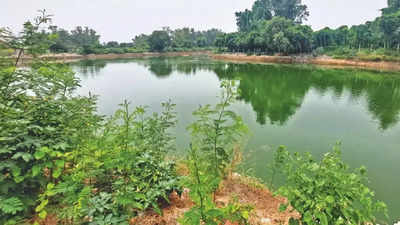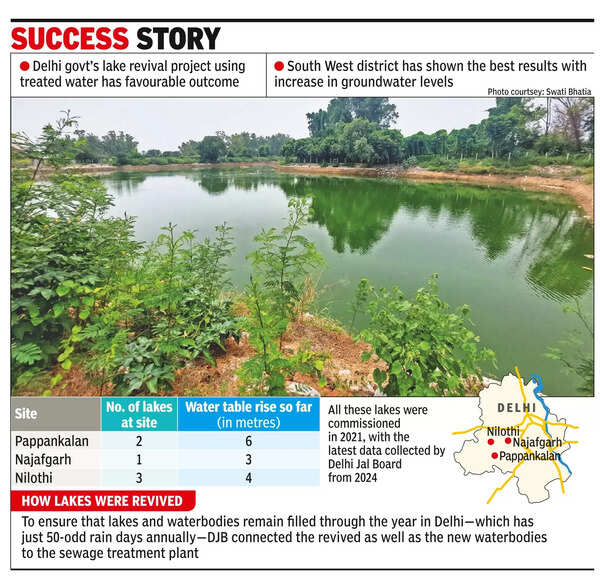- News
- City News
- delhi News
- Tables turned! How lakes project is helping recharge groundwater in Delhi
Trending
Tables turned! How lakes project is helping recharge groundwater in Delhi
Water conservation initiatives in Delhi, like the City of Lakes project, have successfully revitalized waterbodies and boosted groundwater levels. Through innovative strategies like utilizing treated wastewater and recycling sewage, the city aims to address water deficits sustainably, as discussed in a recent symposium led by experts from CSE.

Report Cites Clear Gains At Restored Waterbodies
The findings of the survey are captured in a book titled Back from the Brink: Rejuvenating India’s Lakes, Ponds, and Tanks – A Compendium of Success Stories, which was released at a symposium on Wednesday. The book is based on the year-long survey in which a CSE team reviewed 250 water bodies created or restored under 22 state-level programmes and five central govt schemes.


CSE said that under Delhi govt’s City of Lakes project, 14-15 lakes were artificially created or encroached lakes were restored until December last year. According to the report submitted by Delhi Jal Board to the National Green Tribunal, 155 water bodies have been considered for revival under the project.
At Pappankalan, the groundwater level was 21.8m below the surface level in 2019 but rose to 6m after two lakes were revived there. The groundwater level was estimated using piezometers installed at the sites. These calculate the groundwater pressure and the increase in the groundwater table over time in metres.
“To ensure that lakes and waterbodies remain filled throughout the year — Delhi has just 50-odd rainy days a year — DJB connected the revived as well as the new waterbodies to sewage treatment plants wherever possible. The idea was to fill the waterbodies with treated effluent,” said CSE.
According to the state govt, Delhi also produces 500 million gallons per day (MGD) or 1,893 million litres per day (MLD) of recycled water from 37 operational STPs, 21 of which is currently being wasted. This recycled water can be stored in the proposed lakes and waterbodies and further used to reduce the deficit of 200MGD (757MLD) of water faced annually by the city, CSE pointed out.
Sushmita Sengupta, senior programme manager of the water programme at CSE, said, “It is a good example of water conservation. The project includes filling up the waterbodies with treated wastewater — which was getting wasted by mixing with sewage in a nearby drain. The filled-up water helps to recharge the groundwater in the nearby borewells. The piezometers (for example, those near Najafgarh and Pappan Kalan) which record the local groundwater showed an increase of 3-4 metres in just one year.”
Speaking at a symposium on Wednesday, CSE director general Sunita Narain said, “It is also critical in these times of water stress not only to ensure that wastewater, or sewage, is treated but also to recycle and reuse it. It is here that the waterbodies we protect in our cities, the same ponds and tanks that we use to divert and harvest rainwater, can be used to channel the treated sewage and, in turn, recharge groundwater.”
End of Article
FOLLOW US ON SOCIAL MEDIA










